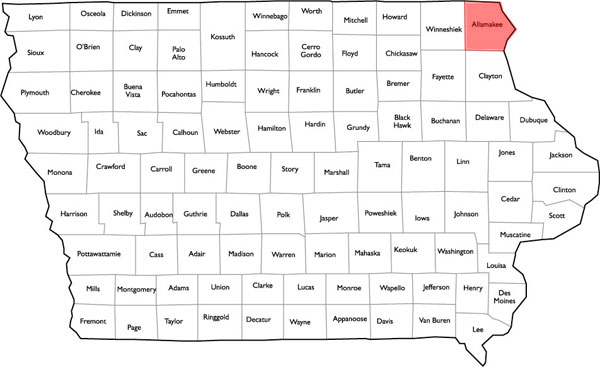LAST UPDATED: May 1st, 2015

The deer was reported as harvested in Allamakee County, located in the far Northeast corner of the state, during the first shotgun season in early December. The Iowa Department of Natural Resources is currently working to obtain as much information as possible about the infected deer to implement its CWD response plan.
“We have been testing for CWD in Iowa’s deer herd for more than a decade and are optimistic, given the extensive data we have collected, that we have caught this early,” said Chuck Gipp, DNR director.
“The next step will be to focus our monitoring efforts in the area where the animal was harvested and work closely with local landowners and hunters to gather more information.” said Gipp.
CWD is a neurological disease affecting primarily deer and elk. It is caused by an abnormal protein, called a prion that attacks the brains of infected animals, causing them to lose weight, display abnormal behavior and lose bodily functions. Signs include excessive salivation, thirst and urination, loss of appetite, progressive weight loss, listlessness and drooping ears and head. The only reliable test for CWD requires testing of lymph nodes or brain material.
There is currently no evidence that humans can contract CWD by eating venison. However, the National Institute of Health and the Center for Disease Control and Prevention recommends that hunters do not eat the brain, eyeballs or spinal cord of deer and that hunters wear protective gloves while field dressing game and boning out meat for consumption.

Prior to the positive detection in Iowa, CWD had been detected in every bordering state.
“With CWD in all the states around us, we have understood the possibility of a positive detection in the wild deer herd for some time” said Gipp.
Since 2002, the DNR has collected more than 650 samples of deer from within a five-mile radius of where the deer is believed to have been harvested.
Editor’s Note: What remains to be seen is how the Iowa DNR will react to this finding in order to try and contain the spread of the disease. While Wisconsin tried unsuccessfully to eradicate the disease through unlimited harvest of deer, other states including Illinois, have found nominal success with sharpshooting programs targeted around CWD “hot spots” to reduce deer numbers.
How do you think the Iowa DNR should handle this new finding?





